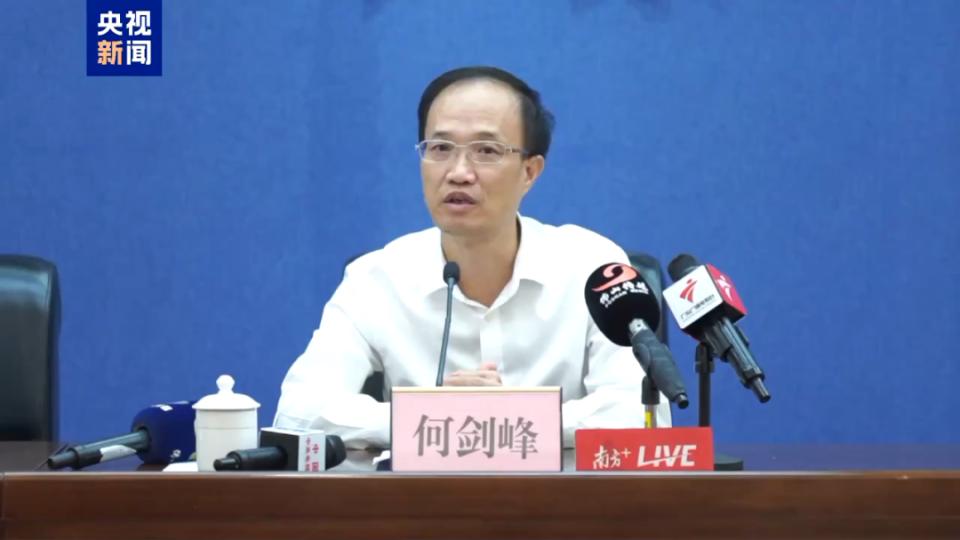According to the Guangdong Meteorological Observatory, Typhoon Wipha, the 6th typhoon of the year, continues to move west-southwest, with its impact on the Shenzhen-Zhongshan Link significantly weakened. After consultation with relevant departments, temporary traffic control will be lifted starting from 21:00 on July 20, and the Shenzhen-Zhongshan Link will resume full two-way traffic.
This afternoon (July 20), at a press conference on the prevention and control of the chikungunya fever outbreak in Foshan, Guangdong, the chief scientist in infectious disease prevention and control at the Guangdong Provincial Center for Disease Control and Prevention stated that chikungunya fever in Guangdong is primarily transmitted through the bite of Aedes albopictus mosquitoes. The key to prevention lies in eliminating adult mosquitoes, clearing stagnant water, and preventing bites.
On July 12, Gansu Province established a provincial investigation team to address the abnormal blood lead levels in children at the Brownstone Peixin Kindergarten in Maiji District, Tianshui City. The team, led by the provincial leadership, includes representatives from the Provincial Commission for Discipline Inspection, the Department of Education, the Department of Public Security, the Department of Ecology and Environment, the Health Commission, and the Market Supervision Bureau, with experts from the Ministry of Ecology and Environment and the National Health Commission participating. The State Council Food Safety Office has dispatched a working group to guide and supervise the investigation. The findings are as follows.
The center of Typhoon Wipha, the 6th typhoon of the year, made landfall near Taishan City, Guangdong, at around 17:50 today (20th), with maximum winds near the center reaching 33 meters per second (Category 12) and a minimum central pressure of 975 hPa.
On the 20th, it was learned from multiple sources that Istanbul, Turkey, will continue to serve as the location for the third round of direct negotiations between Russia and Ukraine.
The National Flood Control and Drought Relief Headquarters and the Ministry of Emergency Management continue to coordinate and deploy defenses against Typhoon Wipha. At 10:00 on the 20th, the flood and typhoon emergency response for Guangdong and Hainan was raised to Level 3, while the response for Guangxi remained at Level 4. The working group dispatched by the National Flood Control and Drought Relief Headquarters continues to assist in guiding typhoon prevention efforts in Guangdong.
Following mutual agreement between Macau and Zhuhai, the Macau Port Area of the Hengqin Port, the Border Gate Port, the Qingmao Port, and the Zhuhai-Macau Cross-Border Industrial Zone Port will reopen and resume customs clearance services starting at 17:00 today (20th).
Typhoon Wipha, the 6th typhoon of the year, is expected to make landfall between Shenzhen and Zhanjiang this afternoon or evening (July 20) as a typhoon or severe typhoon. It may become the strongest typhoon to hit Guangdong this flood season, bringing severe wind and rain impacts.
Currently, based on the typhoon’s path and impact, Shenzhen North Station, Shenzhen Station, Shenzhen East Station, and Futian Station have resumed train operations as planned starting at 15:00, with trains gradually departing in all directions. Additional trains will be scheduled as needed to meet passenger demand.
Recently, an imported outbreak of chikungunya fever occurred in Foshan, Guangdong. At a press conference on the afternoon of July 20, it was reported that as of July 19, Foshan had recorded a total of 1,873 confirmed cases.
According to the Jiyang Education WeChat public account, the Jiyang District Education Bureau of Sanya City has issued a situation report.
On the 20th, the Hong Kong Observatory announced that Typhoon Wipha is gradually moving away from Hong Kong, with winds weakening. At 16:10, the No. 8 gale or storm signal was issued.
During the summer vacation, teenagers’ online time has significantly increased, and cybercriminals are taking advantage by using tactics such as local dating, gaming rewards, and part-time job scams to commit fraud.
Under the Shenzhen-Hong Kong cooperation mechanism,



